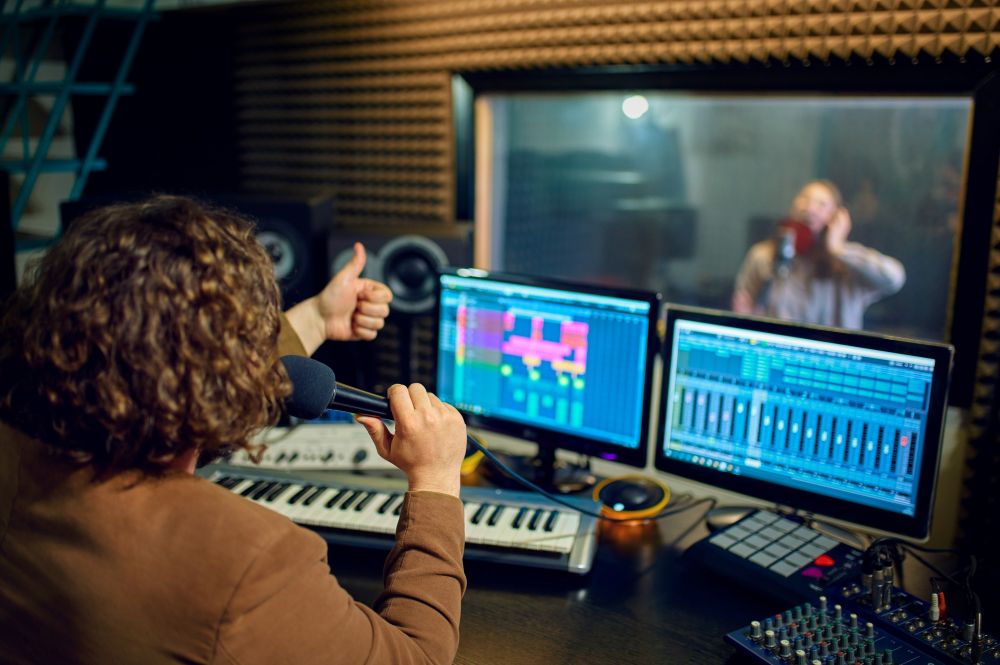In music production, sound effects play an essential role in crafting a sonic landscape that extends beyond the mere arrangement of notes and rhythms. These auditory elements can enrich the musical texture, enhance the storytelling, and create immersive auditory experiences. A music production team, with composers, producers, sound designers, and engineers, can leverage sound effects in a myriad of ways to add depth, character, and dimension to their musical projects and improve efficiency during the production process. This detailed exploration delves into the multifaceted applications of sound effects within music production, illustrating their significance in evolving the art form.

Post Contents
Creating Atmosphere and Setting
One of the primary uses of sound effects in music production is to establish atmosphere and setting. By incorporating sounds such as ambient noise from natural environments (e.g., rain, wind, forest sounds) or urban landscapes (e.g., city traffic, crowd noise), producers can transport listeners to specific locations or evoke particular moods. This technique is often used in cinematic music and concept albums to enhance the narrative and thematic depth of the work. For instance, the sound of waves crashing can imbue a song with a sense of melancholy or longing, while the hustle and bustle of city life can inject energy and dynamism into a track.
Enhancing Rhythmic Elements
Sound effects can also be used to enhance or complement the rhythmic elements of a song. Producers may incorporate unconventional sounds, such as industrial noises, mechanical clicks, or digital glitches, to create unique beats and percussion lines. These sounds can add a layer of complexity and interest to the rhythm section, distinguishing the music from traditional arrangements and appealing to listeners’ desire for innovation. Additionally, sound effects can serve as transitional elements between sections of a song, providing aural cues that signal changes in tempo, mood, or thematic focus.
Adding Narrative and Emotional Depth
Music is a powerful storytelling medium, and sound effects can amplify its narrative and emotional impact. Soundscapes created with carefully chosen sound effects can evoke specific feelings, memories, or images, enhancing the listener’s emotional connection to the music. For example, the sound of a ticking clock can emphasize themes of time, aging, or urgency, while the sound of a heart beating can intensify feelings of anxiety or anticipation. By aligning sound effects with the lyrical content and musical motifs, a production team can craft a more cohesive and impactful narrative.
Innovating with Sound Design
In the pursuit of sonic innovation, music producers often experiment with sound design, manipulating sound effects to create entirely new auditory elements. Through processes such as sampling, synthesis, and digital processing, everyday sounds can be transformed into musical instruments, rhythmic patterns, or atmospheric textures. This creative exploration of sound extends the palette of timbres and textures available to composers and producers, enabling the creation of music that challenges conventional genres and defies easy categorization.
Enhancing Production Quality
Beyond their artistic and narrative contributions, sound effects can enhance the overall production quality of a music project. Strategic use of sound effects can add polish and professionalism to a track, creating a more immersive listening experience. For instance, the use of spatial effects, such as reverb and delay, can simulate acoustic environments, adding a sense of depth and space to the mix. Similarly, the addition of subtle background sounds can fill out the sonic landscape, ensuring that the music feels rich and full, even during quieter passages.
Building Brand and Genre Identity
Sound effects can also play a role in establishing a music production team’s brand identity or solidifying a project’s genre affiliation. Certain sounds or sound design techniques can become signature elements that listeners associate with a particular artist, producer, or genre. For example, the gritty sound of vinyl crackle is often used in lo-fi hip hop to evoke a sense of nostalgia and warmth, while futuristic digital effects may characterize a space-themed electronic album. By consistently incorporating distinctive sound effects, a production team can create a recognizable sonic brand that resonates with their target audience.
Conclusion
The use of sound effects by a music production team represents a convergence of artistry, technology, and storytelling. Through the thoughtful integration of sound effects, producers and composers can enhance the atmospheric, rhythmic, and narrative dimensions of their music, engaging listeners in a more profound and immersive auditory experience. This creative application of sound effects not only enriches individual tracks but also pushes the boundaries of music production, encouraging innovation and exploration within the industry. As music continues to evolve in the digital age, the role of sound effects in shaping the future of the art form cannot be understated, underscoring their importance in the toolkit of modern music producers.